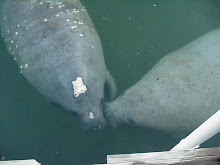Wednesday, September 30, 2015
Monday, September 28, 2015
Fort Boonesborough State Park
Our Boone-centric trip continued with a stop at Fort Boonesborough State Park.
There is a granite marker that is enclosed in a stacked-stone fence. The marker sits on the site of the original Fort Boonesborough that was first established in 1774.
On the granite marker are the names of the people that were stationed at the fort.
Life at Fort Boonesborough provided little comfort in the early years. The cabins provided the bare minimums of comfort. There were crude tables made from slabs of wood and beds were made of feather tick or Buffalo skin.
The fort grew larger and was more fortified as more families arrived in the Kentucky wilderness. The following picture is a drawing of what Fort Boonesborough looked like.
In 1778, 400 Shawnee Indians and 12 French mercenaries attacked and laid siege upon the fort for several days and nights. They attempted to burn the fort by shooting and throwing torches upon the cabin roofs. This failed because rain began and the inhabitants knocked off the split shakes from within the cabins that did catch fire.
The attackers then began to dig a tunnel from the river bank under the cabins. Seeing a line of mud in the river, the settlers knew what the enemy were up to and dug a counter tunnel.
Only two settlers were killed and four wounded while the enemy losses were estimated to be thirty-seven. After thirteen days the French and Indians left in the night and abandoned the attack.
The success of the Boonesborough settlers eventually broke the power of the British to influence the Indians to attack the American settlements and their control of the western theater of the American Revolution.
By 1780, Boonesborough had grown too big for Daniel Boone and he moved away from the fort to a spot across the Kentucky River.
Three years later the American Revolutionary War ended and the need for a fort around the Boonesborough settlement also ended. The old fortified settlement became an open and thriving town for a brief period of time, however, within a couple of decades it had all but disappeared.
In 1963, David Williams Jr. sold fifty-seven acres to the Kentucky Department of Parks to establish Fort Boonesborough State Park. The state park was founded on June 14th of that year. A fort replica was built in 1974 above the original site and out of the flood plain (we will visit the replica in another post...stay tuned).
There was another marker on the park grounds that informed the reader about the "Divine Elm".
The marker reads:
"Near this site, close to the walls of the fort, stood the "Divine Elm", a majestic tree, under whose boughs 100 persons could be seated. The old tree served as both council chamber and church in the development of this state. On May 23, 1775, it was site of the first legislative session held in Kentucky, presided over by Colonel Richard Henderson.
Continued on other side of marker:
"Here, May 28, 1775, the first official Christian worship service in Kentucky was conducted by the Reverend John Lyth, representing the Church of England. To replace the original which fell in 1828, a new elm tree was planted by the Boone Family Association on September 2, 1927, near site of the "Divine Elm". At its roots was placed earth from 37 historic American shrines".
I bet the original elm was a sight to see.
Off to the replica of Fort Boonesborough next........
Subscribe to:
Comments (Atom)













































